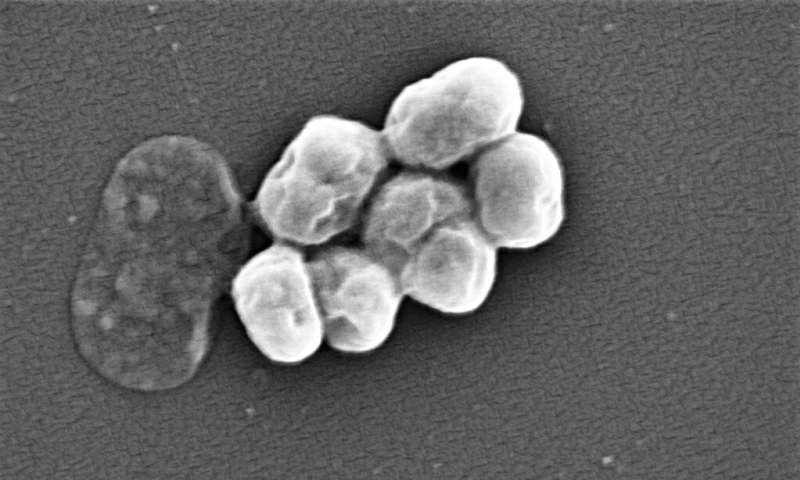Deadly superbug could get a vigorous foe in repurposed antibiotic

USC researchers have discovered that an old antibiotic may be a powerful new tool against a deadly superbug, thanks to an innovative screening method that better mimics conditions inside the human body.
The antibiotic, rifabutin, is "highly active" in fighting multidrug-resistant Acinetobacter baumannii, a significant cause of life-threatening infections in medical facilities, researchers found.
The study appears today in Nature Microbiology.
"Rifabutin has been around for more than 35 years, and no one has ever studied it for Acinetobacter infections before," said first author Brian Luna, assistant professor of molecular microbiology and immunology at Keck School of Medicine of USC. "Going forward, we may find many new antibiotics that have been missed over the last 80 years because the screening tests used to discover them were suboptimal."
Rifabutin is used to treat TB, especially in people with HIV/AIDS who can't tolerate a similar drug, rifampin. It is on the World Health Organization's List of Essential Medicines, the safest and most effective medicines needed in a health system.
Until now, it hadn't been tried against Acinetobacter baumannii, which emerged during the Iraq War as a troop-killing superbug in military treatment facilities. Acinetobacter causes pneumonia, meningitis and bloodstream infections; it tends to strike patients requiring lengthy hospital stays and invasive devices like catheters and ventilators.
Each year, Acinetobacter baumannii is responsible for about 2% of the 99,000 U.S. deaths from hospital-acquired infections, according to the Centers for Disease Control and Prevention.
One reason rifabutin's superpower against superbugs was overlooked is because of current screening techniques, researchers said. Since the 1940s, new or existing antibiotics have been tested against bacteria grown in "rich culture media," a nutrient-packed broth or gel which speeds up the process by making the bacteria to grow rapidly.
"But bacteria grow very differently inside the human body," said Brad Spellberg, chief medical officer at the Los Angeles County-University of Southern California Medical Center and senior author of the study. So, the team designed a new type of "nutrient-limited" media that better mimics conditions inside the body. They hypothesized that the more realistic media might unmask antibiotics with hidden strengths.
They found that rifabutin was vigorously active against Acinetobacter baumannii grown in the nutrient-limited media (as well as in animal tissue) but not effective against bacteria grown in the more commonly used media.
The scientists discovered that rifabutin uses a unique, Trojan-horse strategy to trick the bacteria into actively importing the drug inside itself, bypassing the bacterial outer cell defenses. This "pump" that imports the drug is only active in the more human-like media. In traditional rich culture media, high levels of iron and amino acids suppress the pump's activity, researchers found.
"Rifabutin can be used immediately to treat such infections because it is already FDA-approved, cheap and generic, and on the market," Spellberg said. "But we would like to see randomized controlled human trials to prove its efficacy, so we know for sure one way or the other."Researchers immunize mice against antibiotic-resistant bacteria, report potential for future vaccine
More information: B. Luna et al, A nutrient-limited screen unmasks rifabutin hyperactivity for extensively drug-resistant Acinetobacter baumannii, Nature Microbiology (2020). DOI: 10.1038/s41564-020-0737-6
Provided by University of Southern California
No comments:
Post a Comment